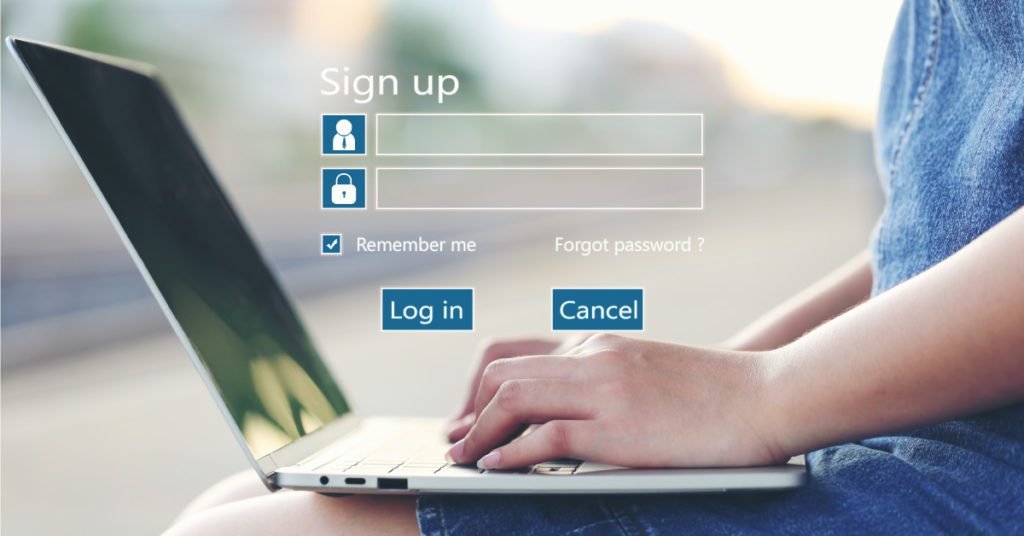While not a new term, subscription billing is a charging method that enables merchants to bill customers automatically on a fixed schedule for a specific product or service. This payment method has roots that date back to the 17th century when English book publishers and periodicals pioneered subscription billing by collecting ‘sponsorships’ from readers. Fast-forward to the 20th century, we saw an uptick in subscription billing services when businesses began offering newspapers, books of the month, and even milk on a subscription basis. As we make our way through the 21st century, subscriptions have become a way of life – think consumables and retail, digital entertainment, maintenance and repair, as-a-service offerings, transportation and travel, etc. Today, virtually anything can be purchased on a subscription basis. The pervasiveness of subscriptions can, in large part, be attributed to the automation provided by modern subscription billing software.
Subscription Billing Described
Tightly integrated with subscription management, subscription billing software enables the automatic collection of payments at set intervals – providing companies with a steady revenue stream. It handles the entire customer lifecycle, from onboarding subscribers, providing free trials, and managing subscription plan upgrades/ downgrades through issuing credits and refunds to handling billing processes on a recurring basis.
Under subscription arrangements, businesses have the flexibility to charge however needed to maintain a consistent cash flow and fulfill customer needs. Depending on the industry and types of services or products offered, subscription-based businesses can invoice annually, quarterly, or monthly. Additionally, most subscription billing occurs via automatic online payments, and subscription billing systems automate payment processing on scheduled recurring intervals.
Understanding the Subscription Billing Workflow Steps
The subscription billing workflow follows a series of processes, with the following steps generally implemented:
- Customer sign up: The subscription billing process begins with customer sign up and usually involves selecting the subscription plan, providing payment information, and agreeing to the company’s terms and conditions.
- Billing timing: The completion of customer sign up kicks off billing functions which will determine how often the customer is to be billed – monthly, quarterly, or annually and the amount to be charged.
- Invoicing: At the predetermined date the billing system will generate an invoice which includes details about the products/services purchased, subscription fee, credits/refunds, applicable taxes/fees, and payment due date.
- Payment processing: Using the subscriber’s chosen payment method, e.g. credit/debit card, PayPal, direct debit, etc., the billing system processes the payment.
- Subscription renewal: To ensure uninterrupted service/product access, many subscription-based businesses automatically renew the customer’s subscription at the end of each billing period, unless the subscriber cancels or pauses their subscription.
- Subscription modifications: Throughout the subscription period, subscribers can make changes to their subscriptions such as upgrades/downgrades, adding/removing features or functionality, changing the payment method, etc.
- Failed payments: When an online payment fails, subscription billing systems leverage dunning mechanisms to automatically initiate the payment recovery process. It notifies the subscriber of the failed payment and will retry the charge to recover the amount due.
- Cancellations: Given that subscribers can cancel their subscription at any time, it’s important that this process provides for easy opt out.
Let’s delve a bit deeper into subscription billing and look at the various subscription billing models.
Subscription Billing Models
There are plenty of billing models to choose from, so take your industry and offers into consideration. Here are the most frequently used subscription billing models.
Freemium
Unlike a free trial that allows the customer to use a product or service at no charge for a limited time, freemium provides subscribers with basic features/functionality at no cost. When additional or advanced functionality/features are needed, the subscriber upgrades to a pay-for-subscription plan.
Flat-Rate Pricing
This is the simplest model to deploy and understand. You charge customers a fixed price that doesn’t vary with volume, time of use, or any other factors.
Usage-Based Pricing
Also called metered billing, consumption billing, and pay-as-you-go pricing, this billing model charges customers a set amount based on their usage of the product or service. When usage exceeds the specified amount, the customer incurs additional charges.
Tiered Pricing
Generally, 2 to 3 tier packages are offered, each with predetermined products, services, features, and functionality that targets different user needs and budgets. As customer requirements increase or needs change, they move to the next tier.
Volume-Based Pricing
Also referred to as volume discounting, this pricing strategy provides price reductions for increased usage. As the quantity increases, the price per unit decreases.
Hybrid Pricing
This pricing model combines various elements of different subscription billing models like traditional flat rate, recurring subscription, and usage-based pricing to provide customers with more flexibility.
Dynamic Pricing
The dynamic pricing model consists of formula-based pricing, time-based pricing, demand-based pricing, and event-based pricing.
- Formula-based pricing calculates the price for a product or service based on a formula that takes multiple conditions/attributes into consideration.
- Time-based pricing uses dates and/or time of day the product or services were used to determine the rate to charge.
- Demand-based pricing, also referred to as surge pricing, enables the price to fluctuate based on customer demand of the product or service.
- Event-based allows businesses to automatically send invoices in response to specific events that are defined based on usage or other related account or product changes.
Subscription pricing models don’t end with the above. Read on for a few variations on traditional pricing models.
Freemium to Subscription
This subscription billing software model offers free access to a limited set of features. In most cases, customers can use these features indefinitely at no charge. If they want to upgrade for access to more features, functionality, etc., they can at any time.
Many B2B companies offer free trials for certain tiers, giving potential customers the opportunity to test their products or services for a limited time. It’s also common to see companies offer enterprise-level tiers without predefined pricing. Companies like Dropbox ask potential heavy users to contact them to discuss usage requirements to better determine subscription pricing.
Limited Promotion to Subscription
Many companies allow users to test their services for a limited time, at no cost, before they automatically roll over into a paid subscription. The promotion-to-subscription approach is similar to the freemium strategy in that it provides a way for businesses to prove their value to customers before they sign up for a paid subscription.
Overage Subscriptions
The overage variation of the subscription billing model means that companies charge a consistent base fee for limited feature access. Customers incur extra charges for using more than the base fee price allocates.
Overage models are valuable for companies whose business models would otherwise favor light users. The overage model enables them to capture additional revenue for heavy users that cost more to support.
Not typically a standard feature of traditional subscription billing software, this model requires advanced billing engine capabilities to calculate the amount of usage over the set amount.
Benefits of Subscription Billing Software
For both businesses and customers alike, subscription billing software offers many benefits, including the simplicity and predictability of knowing receivable amounts and the total cost the customer will pay each billing period. From the business’ perspective they receive a predictable and consistent revenue stream, higher collections and customer retention, lower customer acquisition costs, better upsell and cross-sell opportunities, and billing and business model simplicity.
From the customer’s perspective – whether a business or consumer – they benefit from predictable expenses, cost-effectiveness since automatic payments reduce missed payment penalties, access to high-quality offerings at an affordable price, and auto pay convenience.
These benefits, as well as others, are the primary reasons subscription billing models continue to flourish. Today, companies in every industry and market are implementing subscription business models to attract customers and retain them over the long run. Does this mean that all organizations can successfully implement subscription billing software?
Subscription Billing: Key Requirements
There are several key requirements and capabilities organizations must have to successfully implement subscription billing. When requirements aren’t met, businesses find themselves unable to take full advantage of this business model without incurring increased complexity within their billing operations. Subscription billing may be right for you if you’re able to:
1) Provide Feature Choices
Given the ever-increasing competitiveness subscription-based businesses encounter, you need to offer a variety of features to remain competitive. Ideally, you should offer choices around the products and services within different subscription plans. Additionally, when a customer selects a specific subscription plan, your subscription billing software needs to automatically grant or deny access to features depending on the plan chosen.
2) Charge on a Recurring Basis
Once the subscription plan is selected, you need to follow through with recurring charges. Your subscription billing software needs the capabilities to invoice and bill customers according to the agreed upon billing schedule. Additionally, the subscription billing software solution must have secure access to payment processing platforms that can accept a wide range of digital payment methods such as credit cards and wire transfers.
3) Manage Customers on a Personal Level
To provide customers with the experiences they expect, you need the ability to manage subscribers on a personal level. One that is based on their preferences and history with your products and services. The subscription billing software needs to be able to store information about your customers, including the products/services they subscribe to, price, payment types, billing cycle, add-ons, and more.
4) Deliver Self-Service Capabilities
Customers must have the ability to initiate subscription billing on their own for the products/services chosen. This means that potential users should be able to browse features, input payment information, and begin a subscription without needing to engage with or require assistance from your staff. Additionally, customers need the ability to manage their accounts independently, including having the ability to easily upgrade/downgrade subscription plans and change payment methods.
5) Automate Billing Workflows
To fully reap the benefits of subscription billing, the software should be able to automate workflows, including invoicing, revenue recognition, and dunning – based on individual user accounts. By swapping manual processes for automated workflows, you’ll be able to improve billing accuracy, increase billing efficiency, and plug revenue leaks.
6) Analyze Billing Performance
Subscription billing performance data needs to be available for business intelligence. Finance teams must be able to analyze real-time billing productivity and generate reports to understand the effectiveness of the subscriptions offered. With sophisticated reporting capabilities, organizations can refine their models and maximize the lifetime value of their customers.
Can your billing software solution provide the above functionality? If not, you may have subscription billing software gaps.
Increase Revenue with the Right Subscription Billing Software
BillingPlatform is a cloud-based billing software solution that enables companies to deploy and manage complex subscription models at scale. Our agile and customizable platform can adapt to any business model, any pricing scheme, and any service, as well as easily adapt to dynamic market needs.
With us you get an agile subscription billing software platform that enables you to extend custom data models to build a fully integrated financial ecosystem for any subscription service. Our sophisticated workflow engine enables finance teams to automate billing tasks, as well as create triggers, autoresponders, and outbound communications that are fully executable without the need for human intervention.
Additionally, our highly configurable rules-based engine can automate upgrades, downgrades, and early terminations, which are essential to ensure your subscription pricing models are profitable.
When you choose BillingPlatform for your billing management requirements, you get everything needed to deploy and manage a variety of subscription pricing models simultaneously, as well as easily define custom billing cadences, invoicing cycles, and pricing models. Isn’t it time to replace traditional and error-prone billing methods with a powerful, yet easy to use platform that automates the complete quote-to-cash process? Get started today.



